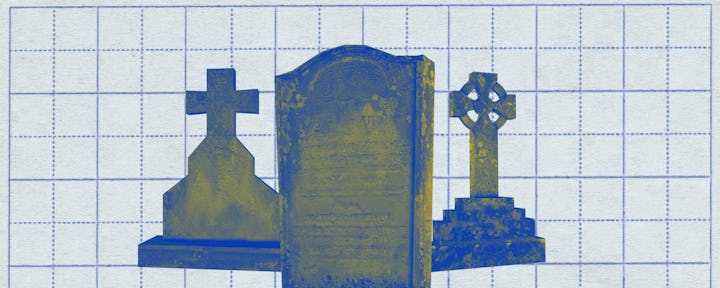Why Do Men Die Younger? The Longevity Gap Explained With Data.
Men are dying younger than women, and it's unfair to blame biology alone. Here's a data-driven analysis of the problem.

Men are dying young. Women worldwide now live an average of seven years longer than men, and biology and genetics alone cannot account for the disparity, which has come to be known as the longevity gap. Part of the problem is that men are significantly more likely than women to pursue dangerous occupations and die on the job. But statistics show that workplace dangers don’t explain away the gap. A more disturbing possibility is that men’s health conditions, including prostate cancer, are not getting the attention that they deserve from the medical establishment or the treatment that the need on a personal level.
The data is hardly reassuring — the only silver lining here is that you likely won’t have to bury your wife — but it is indicative of the state of care in America and the ways in which government institutions are letting men down.
The Longevity Gap Is Only Increasing
The longevity gap is relatively modern phenomena. Data from the Human Mortality Database suggests that, until 1850, men and women had more or less the same life expectancy. As the chart below depicts, the gap has widened steadily since then (shout-out to Spanish Flu, for causing that dip in 1918).
This data illustrates that it is probably unfair to blame the longevity gap on male physiology—biology hasn’t changed since 1850, but relative life expectancy has. Also, while it’s true that the male sex hormone testosterone has been linked to risky behavior and high cholesterol, it’s also true that 287,000 women die each year due to complications from pregnancy and childbirth. The biological gender risk factors should cancel one another out.
So why are men dying earlier? Researchers suspect that two major factors are that men take on riskier jobs and have poorer access to quality healthcare. We’ll explore those factors, below.
Men Are More Likely to Die at Work
Men enjoy any number of advantages in the workplace but, when it comes to staying alive, they are at a serious disadvantage. Data from the Bureau of Labor Statistics suggests that men suffer more than 90 percent of fatal work injuries each year. And it’s not because men work more hours than women. In 2017, there were 5.7 male deaths per 100,000 hours worked, compared to only 0.6 female deaths per 100,000 hours. Men may be more likely to die at work because they disproportionately choose risky careers. The most dangerous jobs include logging, fishing, roofing, and construction—all male-dominated careers, according to the BLS.
The Government Doesn’t Take Men’s Health Seriously
When men aren’t dying prematurely at work, they’re dying at home or in hospitals. Men are 50 percent more likely than women to die of heart disease, and significantly more likely to commit suicide. Prostate cancer is the third leading cause of cancer death in the United States, and nearly 10,000 men in the U.S. are diagnosed with testicular cancer each year.
Nonetheless, there are no federal offices dedicated to men’s health, and a disturbing lack of funding for men’s cancers. The National Cancer Institute spends twice as much funding research on breast cancer than it does on prostate cancer; the National Institutes of Health spends almost three times more. Now it makes sense for breast cancer, which claims about 10,000 more lives each year than prostate cancer, to be better-funded. But should it really be that much better funded?